Water: Green Infrastructure
Green Infrastructure
Features
EPA Announces Recipients of $950,000 in Technical Assistance - EPA is providing technical assistance to 17 communities in 16 states to help protect and restore water quality with green infrastructure.
EPA Releases Green Infrastructure Permitting and Enforcement Series - EPA has released a series of six factsheets on incorporating green infrastructure measures into NPDES wet weather programs.
EPA Announces Campus RainWorks Challenge - EPA is launching a new design competition to encourage student teams on college and university campuses to develop innovative approaches to stormwater management.
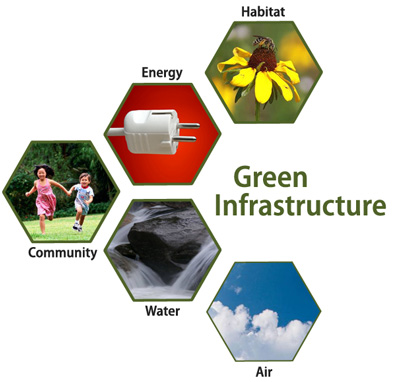
Green infrastructure is an approach that communities can choose to maintain healthy waters, provide multiple environmental benefits and support sustainable communities. Unlike single-purpose gray stormwater infrastructure, which uses pipes to dispose of rainwater, green infrastructure uses vegetation and soil to manage rainwater where it falls. By weaving natural processes into the built environment, green infrastructure provides not only stormwater management, but also flood mitigation, air quality management, and much more.
At a time when so much of our infrastructure is in need of replacement or repair and so few communities can foot the bill, we need resilient and affordable solutions that meet many objectives at once. Green infrastructure is one solution.
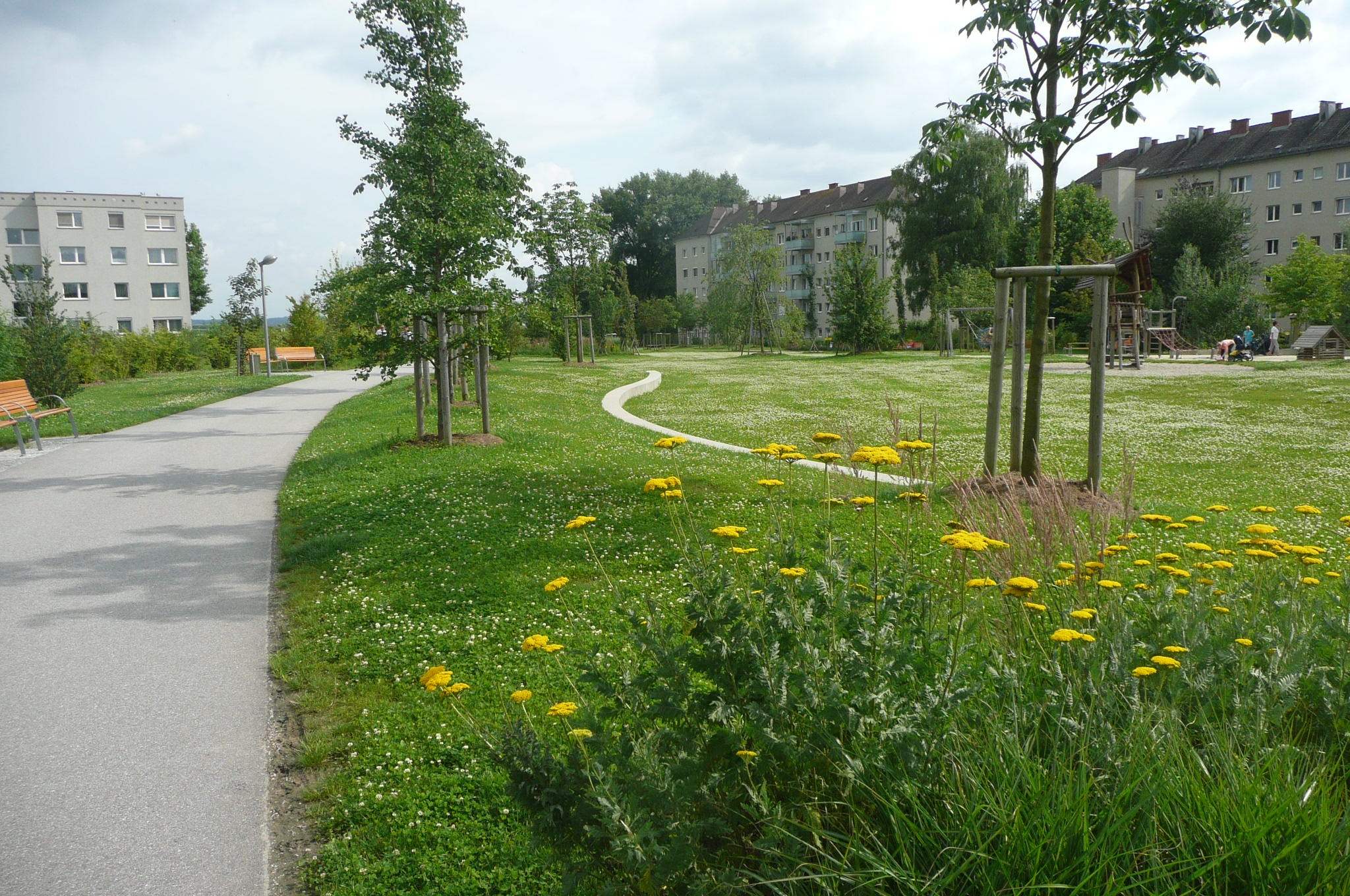

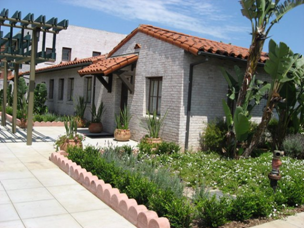
Green infrastructure uses natural hydrologic features to manage water and provide environmental and community benefits.
Learn More
Why Green Infrastructure?
By improving the environment and preserving open space, green infrastructure supports sustainable communities.
Learn More
How Can I Overcome the Barriers to Green Infrastructure?
Many of the barriers to green infrastructure arise from unfamiliarity with green infrastructure approaches, and can be overcome by consulting the experience of municipalities and developers familiar with green infrastructure.
Learn More
What is EPA Doing to Support Green Infrastructure?
EPA’s Strategic Agenda to Protect Waters through Green Infrastructure seeks to expand the use of green infrastructure through community partnerships and information exchange.
Learn More
What are EPA's Partners Doing to Support Green Infrastructure?
EPA works with a variety of organizations to advance green infrastructure, including coalition members, partner communities, and approximately 100 supporting organizations.
Learn More
Where Can I Get More Training?
EPA has developed several webcasts on green infrastructure approaches featuring national experts and maintains a list of upcoming training events.
Learn More



A growing number of tools are available to conduct cost benefit analyses of green infrastructure approaches. Completed analyses demonstrate that the value of green infrastructure benefits can exceed those of gray.
Learn More
Funding Opportunities
Because green infrastructure serves many purposes, from community revitalization to habitat protection, project sponsors can tap a variety of federal funding sources.
Learn More
Policy Guides
Local governments can choose from a variety of policy and planning strategies to encourage or require green infrastructure.
Learn More
Design and Implementation Resources
Green infrastructure is most effective when the design is tailored to the context, when the installation follows the design, and when routine maintenance is performed.
Learn More
Modeling Tools
Modeling tools to assess the performance, costs, and benefits of green infrastructure are available at a range of scales.
Learn More
Federal Regulatory Programs
EPA encourages the use of green infrastructure in stormwater permits and Combined Sewer Overflow (CSO) enforcement agreements.
Learn More
Case studies offer a particularly effective way of sharing this body of knowledge. By telling the story of how green infrastructure was planned, designed, and built in a particular location, case studies illustrate how the concept of green infrastructure can be adapted to particular contexts. To view case studies from your region, click on the appropriate area in the map below. To view national compilations of green infrastructure case studies, scroll to the bottom of the page.
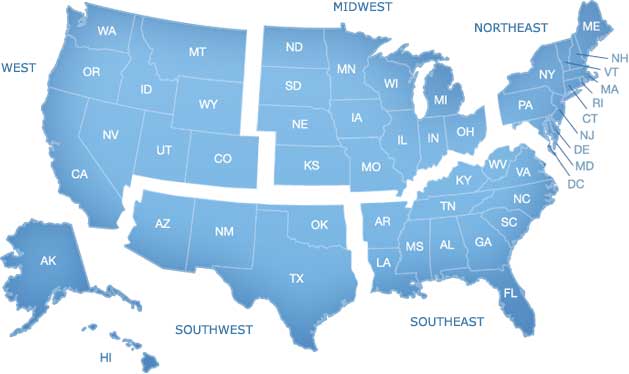
EPA Green Infrastructure Case Studies: Municipal Policies for Managing Stormwater with Green Infrastructure (PDF) (76 pp, 8.2MB, About PDF)
American Society of Landscape Architects Stormwater Case Studies
Landscape Architecture Foundation Landscape Performance Series
National Low Impact Development Atlas


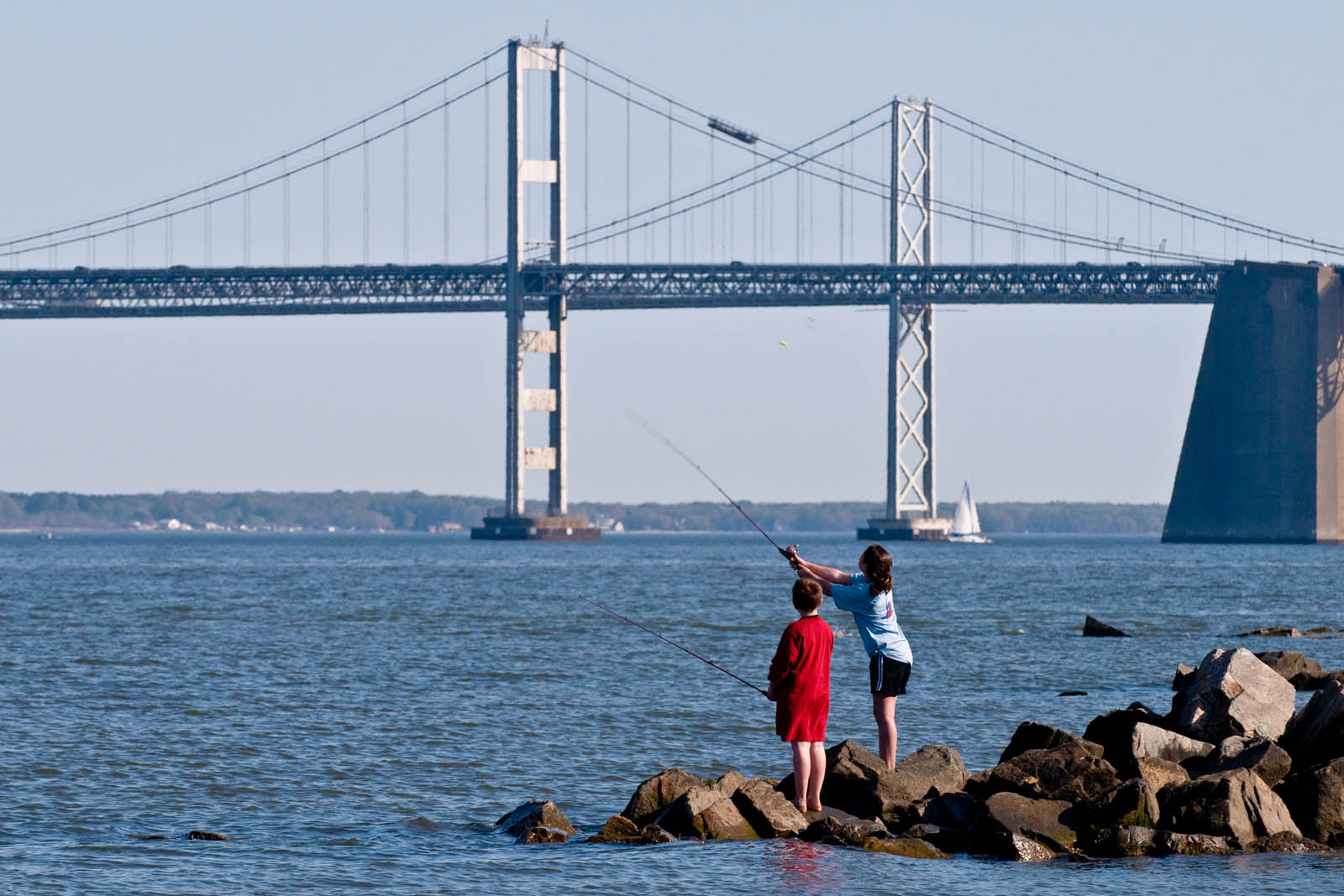
A wealth of research has examined the performance of green infrastructure in reducing the discharge of pollutants to receiving waters, removing air pollutants, and even reducing energy use.
Learn More
Groundwater Impacts
Green infrastructure allows more water to soak into the ground than traditional drainage infrastructure. A growing body of research examines the ability of green infrastructure to restore groundwater recharge, as well as its ability to attenuate pollutants.
Learn More
Community-Scale Studies
EPA is conducting case studies in several communities to assess the effectiveness of green infrastructure in protecting water quality while monitoring social and economic impacts.
Learn More
Economics and Policy
Many studies have examined the role that economics and policy play in implementing green infrastructure concepts.
Learn More
Research Programs
EPA's Safe and Sustainable Water Resources program is one of a growing number of university and government programs engaged in research that supports the design and implementation of green infrastructure.
Learn More
Since the early 1990s, the scientific, regulatory, and development communities have gained a wealth of experience with the implementation and impacts of green infrastructure. Much of this experience is documented in articles, reports, and manuals – but few resources are available that collect all of these materials in one place. This page is intended to fill this gap. Here we present all of the documents cited throughout this website and many more publications that did not fit. We believe this collection represents the latest and most significant publications developed by the scientific, regulatory, and development communities on green infrastructure. To submit a publication to our collection, please e-mail the citation and document to Tamara Mittman.
This page provides links to non-EPA web sites that provide additional information. You will leave the EPA.gov domain and enter another page with more information. EPA cannot attest to the accuracy of information on that non-EPA page. Providing links to a non-EPA Web site is not an endorsement of the other site or the information it contains by EPA or any of its employees. Also, be aware that the privacy protection provided on the EPA.gov domain (see Privacy and Security Notice) may not be available at the external link. ![]()
You will need Adobe Reader to view some of the files on this page. See EPA's PDF page to learn more.

 Resources
Resources
Beach, D. (2001). "Coastal sprawl: The effects of urban design on aquatic ecosystems in the United States (PDF)." (40 pp, 1.6MB) Arlington, Virginia, Pew Oceans Commission.
Bernhardt, E.S., et al. (2005). "Synthesizing U.S. River Restoration Efforts." Science, 308:636–637.
Brody et al. (2007). "The Rising Costs of Floods: Examining the Impact of Development Decisions on Property Damage in Florida (PDF)." (16 pp, 247K) Journal of the American Planning Association, 73(3): 330-345.
Gaffield, S.J., Goo, R.L., Richards, L.A., and Jackson, R.J. (2003). "Public Health Effects of Inadequately Managed Stormwater Runoff." American Journal of Public Health, 93(9): 1527–1533.
Konrad, C .P. (2003). "Effects of Urban Development on Floods (PDF)." (4 pp, 124K) U.S. Geological Survey Fact Sheet FS-076-03.
National Research Council. (2008). "Urban Stormwater Management in the United States." The National Academies Press: Washington, DC.
Rose, S. (2007). "The effects of urbanization on the hydrochemistry of base flow within the Chattahoochee River Basin (Georgia, USA)." Journal of Hydrology 341: 42-54.
U.S. EPA. (2010). "Causal Analysis / Diagnosis Decision Information System Volume 2: Source Module for Urbanization."
Walsh, C. J., A. Roy, J. W. Feminella, P. D. Cottingham, P. M. Groffman, and R. P. Morgan. (2005). "The Urban Stream Syndrome: Current Knowledge and the Search for a Cure (PDF)." (18 pp, 640K) Journal of the North American Benthological Society, 24(3):706-723.

 Resources
Resources
National Association of Home Builders (NAHB) Research Center, Inc. (2003). The Practice of Low Impact Development (PDF)." (131 pp, 3.3MB) Prepared for the U.S. Department of Housing and Urban Development, Office of Policy Development and Research. NAHB Research Center, Inc.: Upper Marlboro, MD.
National Resources Defense Council. (2011). "Rooftops to Rivers II: Green strategies for controlling stormwater and combined sewer overflows (PDF)." (134 pp, 3.1MB)
Natural Resources Defense Council. (1999). "Stormwater Strategies: Community Responses to Runoff Pollution – Chapter 12."
Office of Environmental Health Hazard Assessment and the California Water and Land Use Partnership (CAWALUP). "Low Impact Development (LID): A sensible approach to land development and stormwater management (PDF)." (4 pp, 470K)
Powell, L.M., Rohr, E.S., Canes, M.E., Cornet, J.L., Dzuray, E.J., and McDougal, L.M. "Low-Impact Development Strategies and Tools for Local Governments: Building a Business Case (PDF) (35 pp, 163K)."
Puget Sound Action Team. (2003). "Natural Approaches to Stormwater Management: Low Impact Development in Puget Sound (PDF)." (7 pp, 439K)
U.S. EPA. (2009). "Managing Stormwater with Low Impact Development Practices: Addressing Barriers to LID (PDF)." (7 pp, 439K) EPA 901-F-09-003.
US EPA (2003). "Considerations in the Design of Treatment Best Management Practices (BMPs) to Improve Water Quality (PDF)." (185 pp, 8.4 MB) Publication No. EPA/600/R-03/103 | Abstract
US EPA (2004). "Stormwater Best Management Practice Design Guide Volume 1 – General Considerations(PDF)." (179 pp, 11.7 MB) Publication No. EPA/600/R-04/121 | Abstract

 Resources
Resources
Anderson, S. T. and S. E. West (2006). "Open space, residential property values, and spatial context (PDF)." (17 pp, 831K) Regional Science and Urban Economics, 36: 773-789.
Anton, P. (2005). "The Economic Value of Open Space: Implications for Land Use Decisions (PDF)." (69 pp, 597K) Wilder Research: Saint Paul, MN.
Aukland Regional Council. (2009). "Low Impact Design Versus Conventional Development: Literature Review of Developer-Related Costs and Profit Margins (PDF)." (46 pp, 928K) Aqua Terra International: Aukland, NZ.
Banting, D., H. Doshi, J. Li, P. Missios, A. Au, B. A. Currie and M Verrati. (2005). "Report on the Environmental Benefits and Costs of Green Roof Technology for the City of Toronto (PDF)." (8 pp, 2.7MB) Ryerson University: Toronto, ON.
Beggs, P. and Perrin, C. "Low Impact Development – An Economic Fact Sheet (PDF)." (8 pp, 1.2MB) NC Cooperative Extension - Watershed Education for Communities and Officials.
Bolitzer, B. and N. R. Netusil (2000). "The impact of open spaces on property values in Portland, Oregon." Journal of Environmental Management, 59: 185-193.
Booth, D.B., Visitacion, B., and Steinemann, A. (2006). "Damages and Costs of Stormwater Runoff in the Puget Sound Region – Summary Report (PDF)." (22 pp, 157K) University of Washington: Seattle, WA.
Center for Neighborhood Technology and American Rivers. (2010). "The Value of Green Infrastructure: A Guide to Recognizing Its Economic, Environmental and Social Benefits (PDF)." (80 pp, 16MB)
Cho, S., J. Bowker and W. Park. (2006). "Measuring the Contribution of Water and Green Space Amenities to Housing Values: An Application and Comparison of Spatially-weighted Hedonic Models." University of Tennessee: Knoxville, TN.
Clar, M. (2003). "Pembrook Woods: Lessons Learned in the Design and Construction of an LID Subdivision (PDF)." (9 pp, 285K) In Proceedings of the 2003 Pennsylvania Stormwater Management Symposium. Villanova University: Villanova, PA.
Conservation Research Institute. (2005). "Changing Cost Perceptions: An Analysis of Conservation Development (PDF)." (6 pp, 130K) Prepared for Illinois Conservation Association and Chicago Wilderness. Conservation Research Institute: Elmhurst, IL.
Dahlstrom, R., Roy, R., and Wittenauer, T. (2004). "Blackberry Creek Watershed Alternative Futures Fiscal Impact Study, Kane County, Illinois (PDF)." (57 pp, 5.7MB) NIU Center for Governmental Studies: Dekalb, IL.
David Evans and Associates, Inc. and ECONorthwest. (2008). "Cost Benefit Evaluations of Ecoroofs. Prepared for City of Portland, Bureau of Environmental Services." David Evans and Associates, Inc: Portland, OR.
Dwight, R.H., Fernandez, L.M., Baker, D.B., Semenza, J.C., and Olson, B.H. (2005). "Estimating the economic burden from illnesses associated with recreational coastal water pollution – a case study in Orange County, California." Journal of Environmental Management, 76(2):95-103.
Dwyer, J. F., E. G. McPherson, et al. (1992). "Assessing the Benefits and Costs of the Urban Forest." Journal of Arboriculture, 18(5).
ECONorthwest. (2007). "The Economics of Low-Impact Development: A Literature Review (PDF)." (40 pp, 429K) ECONorthwest: Eugene, OR.
ECONorthwest. (2009). "Low Impact Development at the Local Level: Developers' Experiences and City and County Support (PDF)." (22 pp, 234K) Prepared for The Rock Creek Sustainability Initiative. ECONorthwest: Eugene, OR.
ECONorthwest. (2011). "Managing Stormwater in Redevelopment and Greenfield Development Projects Using Green Infrastructure: Economic Factors that Influence Developers' Decisions (PDF)." (30 pp, 291K) ECONorthwest: Eugene, OR.
ECOTEC. (2008). "The economic benefits of Green Infrastructure: The public and business case for investing in Green Infrastructure and a review of the underpinning evidence." Natural Economy Northwest: England.
Green for All. (2011). Water Works: Rebuilding Infrastructure, Creating Jobs, Greening the Environment (PDF)." (62 pp, 16.6MB)
Gunderson, J., Roseen, R., Janeski, T., Houle, J., and Simpson, M. (2011). "Cost-Effective LID in Commercial and Residential Development." Stormwater: The Journal for Surface Water Quality Professionals, 12(2).
Harnik, P. and B. Welle. (2010). "The Economic Benefits of Denver's Park and Recreation System (PDF)." (24 pp, 948K) The Trust for Public Land: San Francisco, CA.
Johnston, D., Braden, J., and Price, T. (2006). "Downstream Economic Benefits of Conservation Development." Journal of Water Resources Planning and Management, 132(1).
Kaufman, D. and N. Cloutier (2006). "The Impact of Small Brownfields and Greenspaces on Residential Property Values." Journal of Real Estate Finance & Economics, 33(1): 19-30.
Leggett, C. and N. E. Bockstael (2000). "Evidence of the Effects of Water Quality on Residential Land Prices." Journal of Environmental Economics and Management, 39: 121-144.
Loomis, J., Kent, P., Strange, L., Fausche, K., and Covich, A. (2000). "Measuring the total economic value of restoring ecosystem services in an impaired river basin: results from a contingent valuation survey." Ecological Economics, 33: 103-117.
McPherson, G., J. Simpson, P. Peper, S. Maco, and Q. Xiao. (2005). "Municipal Forest Benefits and Costs in Five US Cities (PDF)." (6 pp, 266K) Journal of Forestry, 103(8): 411-416.
Milwaukee Metropolitan Sewerage District. (2011). "Fresh Coast Green Solutions: Weaving Milwaukee's Green & Grey Infrastructure Into A Sustainable Future (PDF)." (28 pp, 4.2MB) MMSD: Milwaukee, WI.
Qiu, Z., and T. Prato. (2006). "Economic Valuation of Riparian Buffer and Open Space in a Suburban Watershed." Journal of the American Water Resources Association, 42(6): 1583 - 1596.
Roseen, R., Janeski, T., Houle, J., Simpson, M., and Gunderson, J. (2010). "Forging the Link: Linking the Economic of Low Impact Development and Community Decisions." University of New Hampshire Stormwater Center: Durham, NH.
U.S. EPA. (2007). "Reducing Stormwater Costs through Low Impact Development (LID) Strategies and Practices." EPA 841- F-07-006.
Vesely, E., Heijs, J., Stumbles, C., and Kettle, D. "The Economics of Low Impact Stormwater Management in Practice – Glencourt Place (PDF)." (15 pp, 443K) Landcare Research: Auckland, NZ.
Ward, B., E. MacMullan, S. Reich. (2008). "The Effect of Low-Impact-Development on Property Values." Water Environment Federation. Sustainability Conference 2008.
Werner, J. E., J. Raser, et al. (1996). "Trees Mean Business: A Study of the Economic Impacts of Trees and Forests in the Commercial Districts of New York City and New Jersey." New York Street Tree Consortium, Inc.

 Resources
Resources
Bean, E., Hunt, W., and Bidelspach, D. (2007). "Field Survey of Permeable Pavement Surface Infiltration Rates." Journal of Irrigation and Drainage Engineering 133(3): 249.
Bedan, E. and Clausen, J. (2009). "Stormwater Runoff Quality and Quantity From Traditional and Low Impact Development Watersheds." Journal of the American Water Resources Association, 45(4): 908-1008.
Brattebo, B. and Booth, D. (2003). "Long-term stormwater quantity and quality performance of permeable pavement systems." Water Research 37(18): 4369-4376.
Casey Trees and LimnoTech, Inc. (2007). "The Green Build-out Model: Quantifying the Stormwater Management Benefits of Trees and Green Roofs in Washington, DC (PDF)." (111 pp, 1.4MB)
Center for Watershed Protection and Chesapeake Stormwater Network. (2008). Runoff Reduction Method Technical Memo - Appendix F: BMP Research Summary Tables.
Center for Watershed Protection. (2007). National Pollutant Removal Performance Database, Version 3 (PDF) (10 pp, 1.2MB). Ellicott City: MD.
Davis, A., Stagge, J., et al. (2011). "Hydraulic performance of grass swales for managing highway runoff." Water Research, In press.
Dietz, M. E. and J. C. Clausen (2008). "Stormwater runoff and export changes with development in a traditional and low impact subdivision (PDF)." (7 pp, 518K) Journal of Environmental Management, 87: 560-566.
Dreelin, E., Fowler, L., and Carroll, C. (2006). "A test of porous pavement effectiveness on clay soils during natural storm events." Water Research 40(4): 799-805.
Hood, M. J., J. C. Clausen, et al. (2007). "Comparison of stormwater lag times for low impact and traditional residential development (PDF)." (11 pp, 464K) Journal of the American Water Resources Association, 43: 1036-1046.
Jaffe, M. et al. (2010). "Illinois Green Infrastructure Study." University of Illinois: Chicago, IL.
Kaufman, M., and Wurtz, M. (2007). "Hydraulic and Economic Benefits of Downspout Diversion." Journal of the American Water Resources Association, 33(2): 491-497.
Leonard Rice Engineers, Meurer & Associates, and Ryley Carlock & Applewhite Professional Association. (2007). "Holistic Approach to Sustainable Water Management in Northwest Douglas County." Prepared for Douglas County Colorado Sustainability Initiative.
Riverkeeper. (2008). "Sustainable Raindrops (PDF)." (40 pp, 2.3MB) Riverkeeper: Tarrytown, NY.
Rowe, B. (2011). "Green Roofs as a Means of Pollution Abatement." Environmental Pollution 159(8-9): 2100-2110.
University of New Hampshire. (2010). "University of New Hampshire Stormwater Center 2009 Biannual Report (PDF)." (36 pp, 13.7MB) University of New Hampshire Stormwater Center: Durham, NH.
US EPA (2009). "Green Roofs for Stormwater Runoff Control (PDF) (81 pp, 2.76 MB)." Publication No. EPA/600/R-09/026 | Abstract
USGS. (2008). "A Comparison of Runoff Quality and Quantity from Two Small Basins Undergoing Implementation of Conventional and Low-Impact Development (LID) Strategies: Cross Plains, Wisconsin, Water Years 1999-2005 (PDF)." (68 pp, 5.6MB) USGS Scientific Investigations Report 2008-5008.
USGS. (2010). "Effects of Low-Impact-Development (LID) Practices on Streamflow, Runoff Quantity, and Runoff Quality in the Ipswich River Basin, Massachusetts: A Summary of Field and Modeling Studies." USGS Circular 1361.
VanWoert N., Rowe B., Andresen J., et al (2005). "Green Roof Stormwater Retention: Effects of Roof Surface, Slope, and Media Depth." Journal of Environmental Quality 34(3): 1036- 1044.
Wright Water Engineers, Inc. and Geosyntec Consultants. International Stormwater BMP Database.
Xiao, Q. and McPherson E. (2011). "Performance of engineered soil and trees in a parking lot bioswales (PDF)." (14 pp, 2MB) Urban Water Journal 8(4): 241–253.
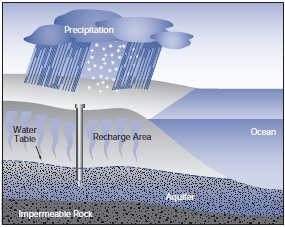
 Resources
Resources
Barraud, S., Gautier A., Bardin J. P., and V. Riou. (1999). "The Impact of Intentional Stormwater Infiltration on Soil and Groundwater." Water Science and Technology, 39 (2): 185-192.
Boving, T., Stolt, M., et al. (2008). "Potential for localized groundwater contamination in a porous pavement parking lot setting in Rhode Island." Environmental Geology, 55(3): 571-582.
Brattebo, B. O., and D. B. Booth. (2003). "Long-Term Stormwater Quantity and Quality Performance of Permeable Pavement Systems (PDF)." (15 pp, 293K) Water Research, 37 (18): 4369-4376.
Bruce, B. W., and P. B. McMahon. (1996). "Shallow Ground-Water Quality Beneath a Major Urban Center: Denver, Colorado, USA." Journal of Hydrology, 186 (1-4): 129-151.
Datry, T., Malard, F., and J. Gibert. (2004). "Dynamics of Solutes and Dissolved Oxygen in Shallow Urban Groundwater Below a Stormwater Infiltration Basin." Science of the Total Environment, 329 (1-3): 215-229.
Davis, A. P., Shokouhian, M., Sharma, H., and C. Minami. (2001). "Laboratory Study of Biological Retention for Urban Stormwater Management (PDF)." (10 pp, 697K) Water Environment Research, 73 (1): 5-14.
Davis, A. P., Shokouhian, M., Sharma, H., Minami, C., and D. Winogradoff. (2003). "Water Quality Improvement through Bioretention: Lead, Copper, and Zinc Removal (PDF)." (10 pp, 1.4MB) Water Environment Research, 75 (1): 73-82.
Day, G. E., Smith, D. R., and J. Bowers. (1981). "Runoff and Pollution Abatement Characteristics of Concrete Grid Pavements (PDF)." (49 pp, 777K) Virginia Water Resources Research Center, Virginia Polytechnic Institute and State University. Project A-090-VA VPI-VWRRC-BULL 135 4C.
Dietz, M. E., and J. C. Clausen. (2005). "A Field Evaluation of Rain Garden Flow and Pollutant Treatment." Water, Air, and Soil Pollution, 167 (1-4): 123-138.
Fischer, D., Charles, E. G., and A. L. Baehr. 2003. "Effects of Stormwater Infiltration on Quality of Groundwater Beneath Retention and Detention Basins." Journal of Environmental Engineering, 129 (5): 464-471.
Gilbert, J. K., and J. C. Clausen. (2006). "Stormwater Runoff Quality and Quantity from Asphalt, Paver, and Crushed Stone Driveways in Connecticut." Water Research, 40 (4): 826-832.
Granato, G. E., Church, P. E., and V. J. Stone. (1995). "Mobilization of Major and Trace Constituents of Highway Runoff in Groundwater Potentially Caused by Deicing Chemical Migration (PDF)." (14 pp, 1.9MB) Prepared for the Transportation Research Board. Transportation Research Record 1483. Washington, DC: National Research Council.
Hathhorn, W. E., and D. R. Yonge. (1995). "The Assessment of Groundwater Pollution Potential Resulting from Stormwater Infiltration BMPs (PDF)." (188 pp, 1MB) Technical report. Prepared by Washington State Transportation Center (TRAC) for Washington State Transportation Commission. August, 1995.
Hopeck, J. (2007). "Assessment of Stormwater Infiltration Impacts on Groundwater Quality in Southern Maine, and their Relation to Changes in Regulatory Programs (PDF)." (10 pp, 289K) Ground Water Protection Council (GWPC) Meeting Proceedings 2007
Kelly, W. R. (2008). "Long-Term Trends in Chloride Concentrations in Shallow Aquifers Near Chicago (PDF)." Ground Water, 46 (5): 772-781.
Kunze, A. E., and B. N. Sroka. (2004). "Effects of Highway Deicing Chemicals on Shallow Unconsolidated Aquifers in Ohio - Final Report." Prepared in cooperation with the Ohio Department of Transportation and the United States Deparment of Transportation, Federal Highway Administration. Scientific Investigations Report 2004-5150. Denver, CO: United States Geological Survey (USGS).
Legret, M., and V. Colandini. (1999). "Effects of a Porous Pavement with Reservoir Structure on Runoff Water: Water Quality and Fate of Heavy Metals (PDF)." (7 pp, 364K) Water Science and Technology, 39 (2): 111-117.
Los Angeles and San Gabriel Rivers Watershed Council. (2010). "Water Augmentation Study: Research Strategy and Implementation Report (PDF) (88 pp, 14MB)."
Mikkelsen, P., Hafliger, M., Ochs, M., Jacobsen, P., Tjell, J., and M. Boller. (1997). "Pollution of Soil and Groundwater from Infiltration of Highly Contaminated Stormwater – A Case Study (PDF)." (6 pp, 341K) Water Science and Technology, 36 (8-9): 325-330.
Perine, A.N., undated. "An Investigation of Potential Ground and Surface Water Contamination from Stormwater Discharge, City of Missoula, MT. Part I: Accumulation of Arsenic and Metals in Storm-Water Injection Well Sediments (PDF)." (17 pp, 633K)
Pitt, R., Clark, S., Parmer, K., and R. Field. (1996). "Groundwater Contamination from Stormwater Infiltration. First edition. Chelsea, MI: Ann Arbor Press, Inc.
Thomas, M. A. (2000). "The Effect of Residential Development on Ground-Water Quality near Detroit, Michigan." Journal of the American Water Resources Association, 36 (5): 1023-1038.
Wilson, L. G., Osborn, M. D., Olson, K. L., Maida, S. M., and L. T. Katz. (1990). "The Ground Water Recharge and Pollution Potential of Dry Wells in Pima County, Arizona." Ground Water Monitoring and Remediation, 10 (3): 114-121.

 Resources
Resources
Escobedo, F. J. and D. J. Nowak (2009). "Spatial heterogeneity and air pollution removal by an urban forest." Landscape and Urban Planning 90: 102-110.
Nowak, D., Crane, D., and Stevens, J. (2006). "Air pollution removal by urban trees and shrubs in the United States." Urban Forestry & Urban Greening 4(3-4) 115-123.
Nowak, D., Heisler, G. (2010). "Air Quality Effects of Urban Trees and Parks (PDF) (48 pp, 6.6MB)." National Recreation and Park Association.
Scott, K.I., Simpson, J.R., and McPherson, E.G. (1999). "Effects of Tree Cover on Parking Lot Microclimate and Vehicle Emissions (PDF)." (14 pp, 281K) Journal of Arboriculture 25(3).
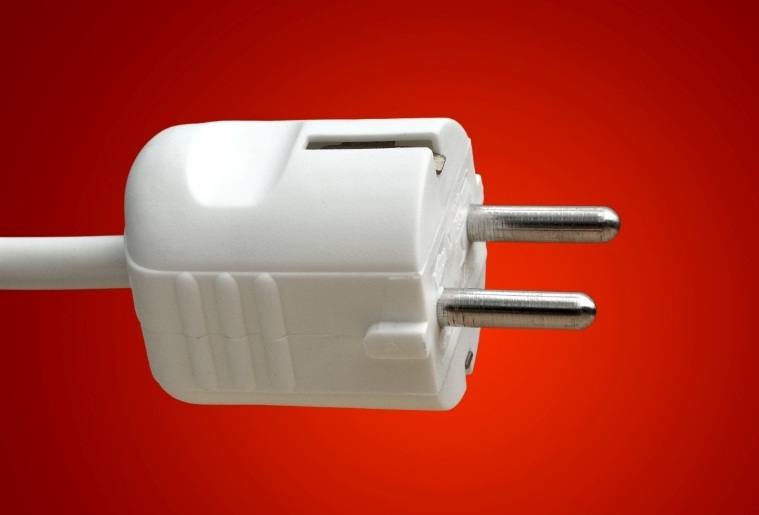
 Resources
Resources
Clark, C., et al. (2010). "Quantifying Thermal Impacts of Green Infrastructure: Review and Gaps." Presented at Cities of the Future 2010: Urban River Restoration: Boston, MA.
Foster, J., & Lowe, A. (2011). "The Value of Green Infrastructure for Urban Climate Adaptation (PDF)." (7 pp, 439K) Center for Clean Air Policy.
Garrison N., R. Wilkinson, and R. Horner. (2009). "A Clear Blue Future: How Greening California Cities Can Address Water Resources and Climate Challenges in the 21st Century." Natural Resources Defense Council.
Gorsevski, V., et al. (2002). "Air Pollution Prevention Through Urban Heat Island Mitigation: An Update on the Urban Heat Island Project (PDF)." (10 pp, 588K)
Konopacki, S. and H. Akbari (2000). "Energy Savings Calculations for Heat Island Reduction Strategies in Baton Rouge, Sacramento and Salt Lake City." Lawrence Berkeley National Laboratory: Lawrence Berkeley National Laboratory.
Kurn, D. M., S. E. Bretz, et al. (1996). "The potential for reducing urban air temperatures and energy consumption through vegetative cooling (PDF)." (12 pp, 381K) Lawrence Berkeley Lab., CA (United States).
Natural Resources Defense Council. (2009). "Water Efficiency Saves Energy: Reducing Global Warming Pollution Through Water Use Strategies (PDF)." (4 pp, 736K)
Rosenfeld, A. H. and J. J. Romm (1996). "Policies to Reduce Heat Islands: Magnitudes of Benefits and Incentives to Achieve Them (PDF)." (18 pp, 6.5MB) Pacific Grove, CA.
Rosenzweig, C., S. Gaffin, and L. Parshall (eds.) (2006). "Green Roofs in the New York Metropolitan Region: Research Report." Columbia University Center for Climate Systems Research and NASA Goddard Institute for Space Studies: New York, NY.
U.S. EPA. (2008). "Reducing Urban Heat Islands: Compendium of Strategies—Trees and Vegetation, Green Roofs". US EPA: Washington, DC.
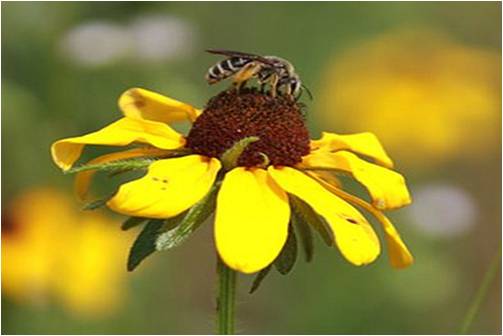
 Resources
Resources
Cornelis, J. and Hermy, M. (2004). "Biodiversity relationships in urban and suburban parks in Flanders." Landscape and Urban Planning, 69(4): 385- 401.
Lundholm, J. (2006). "Green Roofs and Facades: A Habitat Template Approach." Urban Habitats, 4(1).
Oberndorfer ,E., Lundholm, J., et al (2007). "Green Roofs as Urban Ecosystems: Ecological Structures, Functions, and Services." BioScience 57(10): 823-833.
University College Dublin. (2008). "Green City Guidelines." UCD Ireland: Dublin, Ireland.

 Resources
Resources
Giles, C., et al. (2005). "Increasing walking: how important is distance to, attractiveness, and size of public open space?" American Journal of Preventative Medicine 28(2 Suppl 2): 169-76.
Green for All. (2011). "Water Works: Rebuilding Infrastructure, Creating Jobs, Greening the Environment (PDF)." (316 pp, 2.46MB)
Takano, T., Nakamura, K., and Watanabe, M. (2002). "Urban residential environments and senior citizens' longevity in megacity areas: the importance of walkable green space." Journal of Epidemiology and Community Health 56(12): 913-918.
U.S. EPA. (2010). "Green Jobs Training: A Catalogue of Training Opportunities for Green Infrastructure Technologies (PDF)." (52 pp, 1.1MB)
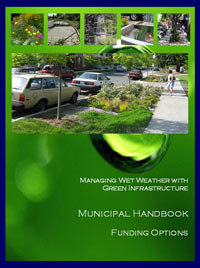
 Resources
Resources
Beezhold, M. T. (2006). "Rain to Recreation: Making The Case for a Stormwater Capital Recovery Fee (PDF)." (12 pp, 621K) Water Environment Foundation.
Benedict, M. A. and McMahon, E. T. (2002). "Green Infrastructure: Smart Conservation for the 21st Century." The Conservation Fund.
Black & Veatch. (2009). "Rock Creek Watershed Planning Alternative Futures Study (PDF)." (196 pp, 4.2MB) US Army Corps of Engineers: Kansas City, MO.
Brown and Caldwell, HNTB, & Tetra Tech, Inc. (2011). "Determining the Potential of Green Infrastructure to Reduce Overflows in Milwaukee." Milwaukee Metropolitan Sewerage District: Milwaukee, WI.
Casey Trees and LimnoTech, Inc. (2005). "Re-Greening Washington, D.C.: A Green Roof Vision Based on Quantifying Stormwater and Air Quality Benefits (PDF)." (17 pp, 502K)
CH2MHill. (2011). "Pierce County Low Impact Development Study––Final Report (PDF)." (44 pp, 691K) Prepared for Pierce County. CH2MHill: Bellevue, WA.
Chau, H-F. (2009). "Green Infrastructure for Los Angeles: Addressing Urban Runoff and Water Supply Through Low Impact Development (PDF)." (20 pp, 849K) City of Los Angeles Stormwater Program: Los Angeles, CA.
Community Design + Architecture. (2005). "Stormwater Guidelines for Green, Dense Redevelopment."
ECONorthwest (2009). "Low Impact Development At The Local Level: Developers ' Experiences and City and County Support (PDF)." (22 pp, 233K) Prepared for The Rock Creek Sustainability Initiative. ECONorthwest: Eugene, OR.
Entrix, Inc. (2010). "Portland's Green Infrastructure: Quantifying the Health, Energy, and Community Livability Benefits." City of Portland Bureau of Environmental Services: Portland, OR.
Industrial Economics, Inc. (IEc). (2010). "Cost Analysis of Proposed District of Columbia Stormwater Regulations (PDF)." (96 pp, 378K) District of Columbia Department of the Environment: Washington, DC.
Lulley, C.J. and Bond, J. (March 2002). "A Plan to Integrate Management of Urban Trees into Air Quality Planning." Prepared for the North East State Foresters Association. Developed by members of the Davey Resource Group, the New York State Department of Environmental Conservation, and the USDA Forest Service's Northeastern Research Station.
NAHB Research Center, Inc. (2001)."Environmentally Green…Economically Green: Tools for a Green Land Development Program." NAHB Research Center, Inc.: Upper Marlboro, MD.
National Association of Home Builders (NAHB) Research Center, Inc. (2003). "The Practice of Low Impact Development (PDF)." (131 pp, 3.3MB) Prepared for the U.S. Department of Housing and Urban Development, Office of Policy Development and Research. NAHB Research Center, Inc.: Upper Marlboro, MD.
NIU Center for Governmental Studies. (2004). "Blackberry Creek Watershed Alternative Futures Fiscal Impact Study (PDF)." (57 pp, 5.7MB) NIU Center for Governmental Studies: Kane County, IL.
NYC Department of Environmental Protection. (2010). "NYC Green Infrastructure Plan: A Sustainable Strategy for Clean Waterways." NYC Department of Environmental Protection: New York, NY.
Oregon Environmental Council. (2007). "Stormwater Solutions: Turning Oregon's Rain Back into a Resource." Oregon Environmental Council: Portland, OR.
Pejchar, L., Morgan, P. M., Caldwell, M. R., Palmer, C., & Daily, G. C. (2006). "Evaluating the Potential for Conservation Development: Biophysical, Economic, and Institutional Perspectives (PDF)." (10 pp, 2.6 MB) Conservation Biology, 21(1): 69-78.
Stratus Consulting. (2009). "A Triple Bottom Line Assessment of Traditional and Green Infrastructure Options for Controlling CSO Events in Philadelphia's Watersheds (PDF)." (160 pp, 2.5MB) City of Philadelphia Water Department: Philadelphia, PA.
U.S. EPA. (2004). "Protecting Water Resources with Smart Growth (PDF)." (120 pp, 1.4MB) EPA 231-R-04-002.
U.S. EPA. (2006). "Parking Spaces / Community Places: Finding the Balance through Smart Growth Solutions." EPA 231-K- 06-001.
U.S. EPA. (2006). "Protecting Water Resources with Higher-Density Development ." EPA 231-R-06-001.
U.S. EPA. (2008). "Managing Wet Weather with Green Infrastructure Municipal Handbook: Funding Options (PDF)." (16 pp, 659K) EPA-833-F-08-007.
U.S. EPA. (2008). "Managing Wet Weather with Green Infrastructure Municipal Handbook: Green Infrastructure Retrofit Policies (PDF)." (23 pp, 2.4MB) EPA-833-F-08-008.
U.S. EPA. (2008). "Managing Wet Weather with Green Infrastructure Municipal Handbook: Green Streets (PDF)." (19 pp, 1.8MB) EPA-833-F-08-009.
U.S. EPA. (2008). "Managing Wet Weather with Green Infrastructure Municipal Handbook: Rainwater Harvesting Policies." (16 pp, 1.4MB) EPA-833-F-08-010.
U.S. EPA. (2009). "Managing Wet Weather with Green Infrastructure Municipal Handbook: Incentive Mechanisms." (35 pp, 1.8MB) EPA-833-F-09-001.
U.S. EPA. (2009). "Water Quality Scorecard." EPA 231-B-09-001.
U.S. EPA. (2010). "Green Infrastructure Case Studies: Municipal Policies for Managing Wet Weather with Green Infrastructure (PDF)." (76 pp, 8.2MB) EPA-841-F-10-004.

 Resources
Resources
Center for Watershed Protection. (2009).“Coastal Stormwater Supplement to the Georgia Stormwater Management Manual (PDF)." (542 pp, 13.9MB) Center for Watershed Protection: Elicott City, MD.
Center for Watershed Protection. (2010). “New York State Stormwater Management Design Manual.” Prepared for New York State Department of Environmental Conservation. Center for Watershed Protection: Elicott City, MD.
Central Oregon Intergovernmental Council. (2010). “Central Oregon Stormwater Manual (PDF)." (300 pp, 12.1MB)
City of Portland Environmental Services. (2006). “Stormwater Management Facilities: Operation and Maintenance for Private Property Owners.” City of Portland Environmental Services: Portland, OR.
Colwell, S. and Tackett, T. (2011). “Ballard Roadside Rain Gardens, Phase I – Lessons Learned (PDF)." (76 pp, 8.2MB) Seattle Public Utilities: Seattle, WA.
Credit Valley Conservation. (2010). “Low Impact Development Stormwater Management Planning and Design Guide .” Credit Valley Conservation: Mississauga, Ontario.
Credit Valley Conservation. (2011). “Designer’s Guide for Low Impact Development Construction (Draft) (PDF)." (126 pp, 12.9MB) Credit Valley Conservation: Mississauga, Ontario.
Design Trust for Public Space and City of New York Department of Parks and Recreation. (2010). “High Performance Landscape Guidelines.”
Jones Edmunds & Associates, Inc., University of Florida, and STE. (2008). “Preliminary Low Impact Development Manual for Sarasota County (PDF)." (85 pp, 5MB) Prepared for Sarasota County, FL.
Minnesota Pollution Control Agency. (2008). “Minnesota Stormwater Manual.” Minnesota Pollution Control Agency: St Paul, MN.
Puget Sound Action Team and Washington State University Pierce County Extension. (2005). "Low Impact Development Technical Guidance Manual for Puget Sound (PDF)." (256 pp, 7.7MB) Puget Sound Action Team: Olympia, WA.
Seattle Public Utilities. (2009). “Green Stormwater Operations and Maintenance Manual (PDF)." (25 pp, 4.6MB) Seattle Public Utilities: Seattle, WA.
U.S. EPA. (2011). "Evaluation of Urban Soils: Suitability for Green Infrastructure or Urban Agriculture (PDF)." (26 pp, 3.2MB) EPA 905R1103.
Watershed Management Group. (2010). “Green Infrastructure for Southwestern Neighborhoods (PDF)." (48 pp, 12MB) Watershed Management Group: Tucson, AZ.
Wisconsin Department of Natural Resources and U.S. Geological Survey. (2003). “Rain Gardens: A how-to manual for homeowners (PDF)." (36 pp, 3MB) DNR Publication PUB-WT-776 2003.

U.S. Environmental Protection Agency
Chris Kloss
US EPA / Water Permits Division
Mail Code: 4203M
1200 Pennsylvania Avenue, NW
Washington, D.C. 20460-0001
Phone: (202) 564-1438
kloss.christopher@epa.gov
Tamara Mittman
US EPA / Water Permits Division
Mail Code: 4203M
1200 Pennsylvania Avenue, NW
Washington, D.C. 20460-0001
Phone: (202) 564-1093
mittman.tamara@epa.gov
Robert Goo
US EPA / Assessment & Watershed Protection Division
Mail Code: 4503T
1200 Pennsylvania Avenue, NW
Washington, D.C. 20460-0001
Phone: (202) 566-1201
goo.robert@epa.gov
Alice Gilliland
US EPA / Office Of Research and Development / National Risk Management Research Laboratory
26 West Martin Luther King Dr. MS 236
Cincinnati, OH 45268
Phone: (513) 569-7852
gilliland.alice@epa.gov
Michelle Latham
US EPA / Office Of Research and Development / National Risk Management Research Laboratory
26 West Martin Luther King Dr. MS 236
Cincinnati, OH 45268
Phone: (513) 569-7601
latham.michelle@epa.gov
REGION 1 CONTACT:
Johanna Hunter
US EPA, Region 01 / Office of Ecosystem Protection
1 Congress St
Suite 1100
(CMU)
Boston, MA 02114-2023
Phone: (617) 918-1041
hunter.johanna@epa.gov
Websites:
Soak Up the Rain
Low Impact Development
GreenScapes
REGION 2 CONTACT:
Jeff Gratz
US EPA, Region 02 / Division of Environmental Planning and Protection
290 Broadway
New York, NY 10007-1866
Phone: (212) 637-3873
gratz.jeff@epa.gov
REGION 3 CONTACT:
Dominique Lueckenhoff
US EPA, Region 03 / Water Protection Division
1650 Arch St
(3WP10)
Philadelphia, PA 19103-2029
Phone: (215) 814-5810
lueckenhoff.dominique@epa.gov
Websites:
Green Streets, Green Jobs, Green Towns (G3) Initiative
REGION 4 CONTACT:
Darryl Williams
US EPA, Region 04 / Water Protection Division
61 Forsyth Street, S.W.
Atlanta, GA 30303-8960
Phone: (404) 562-9297
williams.darryl@epa.gov
REGION 5 CONTACT:
Bob Newport
US EPA, Region 05 / Water Division
77 West Jackson Blvd
(WN-16J)
Chicago, IL 60604-3507
Phone: (312) 886-1513
newport.bob@epa.gov
REGION 6 CONTACT:
Brent Larsen
US EPA, Region 06 / Water Quality Protection Division
1445 Ross Ave
Suite 1200 (6WQPP)
Dallas, TX 75202-2733
Phone: (214) 665-7523
larsen.brent@epa.gov
Suzanna M. Perea
US EPA, Region 06 / Water Quality Protection Division
1445 Ross Ave
Suite 1200 (6WQPP)
Dallas, TX 75202-2733
Phone: (214) 665-7217
perea.suzanna@epa.gov
REGION 7 CONTACT:
Kerry Herndon
US EPA, Region 07 / Water, Wetlands, and Pesticides Division
901 North Fifth St
(WWPD/WPIB)
Kansas City, KS 66101
Phone: (913) 551-7286
herndon.kerry@epa.gov
Mandy Whitsitt
US EPA, Region 07 / Water, Wetlands, and Pesticides Division
901 North Fifth St
(WWPD/WPIB)
Kansas City, KS 66101
Phone: (913) 551-7311
whitsitt.mandy@epa.gov
REGION 8 CONTACT:
Stacey Eriksen
US EPA, Region 08
1595 Wynkoop St
Denver, CO 80202-1129
Phone: (303) 312-6692
eriksen.stacey@epa.gov
REGION 9 CONTACT:
John Kemmerer
US EPA, Region 09 Southern California Office / Water Division
600 Wilshire Blvd, Suite 1460
Los Angeles, CA 90017
Phone: (213) 244-1832
kemmerer.john@epa.gov
Websites:
Low Impact Development
REGION 10 CONTACT:
Krista Mendelman
US EPA, Region 10 / Office of Water and Watersheds
1200 Sixth Ave, Suite 900
Seattle, WA 98101
Phone: (206) 553-1571
mendelman.krista@epa.gov
Katherine Baer
Director, Clean Water Program
1101 14th Street NW, Suite 1400
Washington, DC 20005
Phone: (202) 347-7550
kbaer@americanrivers.org
Association of Clean Water Administrators ![]()
Alexandra Dunn
Executive Director and General Counsel
1221 Connecticut Avenue N.W., 2nd Floor
Washington, D.C. 20036
Phone: (202) 756-0600
a.dunn@acwa-us.org
Low Impact Development Center
Neil Weinstein
Executive Director
5000 Sunnyside Avenue
Suite 100
Beltsville, Maryland 20705
Phone: (301) 982-5559
nweinstein@lowimpactdevelopment.org
Nathan Gardner-Andrews
Counsel
1816 Jefferson Place, N.W.
Washington, DC 20036-2505
Phone: (202) 833-3692
ngardner-andrews@nacwa.org
Natural Resources Defense Council
David Beckman
Director, Water Program
1314 Second Street
Santa Monica, CA 90401
Phone: (310) 434-2300
dbeckman@nrdc.org
Jon Devine
Senior Attorney
1152 15th St NW
Washington, DC 20005
Phone: (202) 289-6868
jdevine@nrdc.org
Seth Brown
Manager, Public Policy and Stormwater Team Lead Water Environment Federation
601 Wythe St.
Alexandria, VA 22314-1994
Phone: (703) 684-2423
sbrown@wef.org




